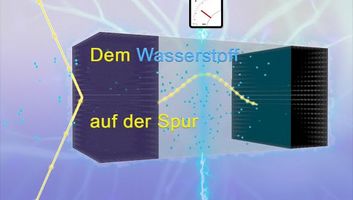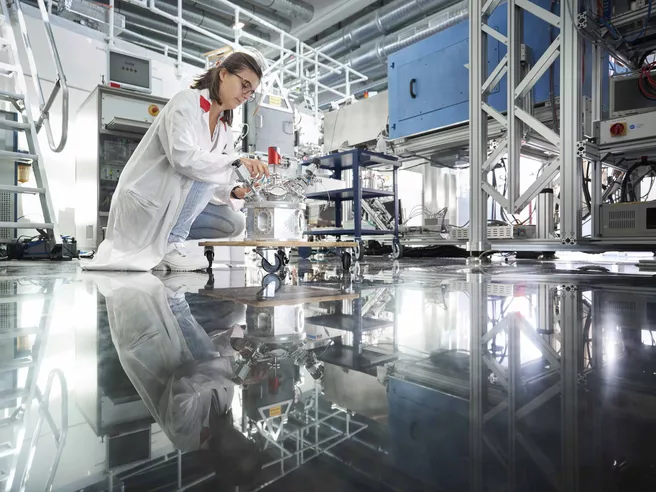Using neutron reflectometry at the MLZ, Guasco and other researchers from the Max Planck Institute for Solid State Research, Forschungszentrum Jülich, Helmholtz Zentrum Berlin and the Laboratorio Argentino de Haces de Neutrones in Argentina analyzed how the hydrogen is distributed in thin layers . “With normal neutron reflectometry, we can reliably measure hydrogen concentrations of 5% with a depth resolution of one nanometer,” explains Guasco. Up to now, real-time experiments have also been limited to slow processes on the order of minutes to hours because of the long exposure times. In spite of this, the neurons in artificial networks tend to react in fractions of a second.
Seconds instead of hours
In their experiments on the MLZ neutron reflectometer NREX, the researchers have now significantly increased the sensitivity of the measurements for real-time experiments in thin films. They examined niobium layers while they were being charged with hydrogen. “We tracked the process of hydrogen loading ten times more sensitively than before. And that on a time scale of a few seconds instead of the hours previously,” reports Guasco.
Advantage of neutrons over X-rays
In addition, the neutrons provide absolute values of the hydrogen concentration – in contrast to X-rays, which only make the hydrogenation process visible indirectly via its influence on the layer thickness. Radiation damage in the material from neutrons is negligible, in contrast to nuclear methods for hydrogen detection, which require high-energy ions. “Another advantage of neutrons: The researchers can carry out investigations in-situ in a hydrogen atmosphere, while other methods often require a high vacuum,” says Guasco and is certain: “With its high sensitivity and its ability to quickly study motion sequences, it has the potential to become a powerful tool for the microscopic understanding and control of hydrogen in solids.” This will also increase the power of neural networks in the future.
Original publication:
Laura Guasco, Yu. N. Khaydukov, S. Pütter, L. Silvi, M. A. Paulin, T. Keller, B. Keimer
Resonant neutron reflectometry for hydrogen detection
Nature Communications, 13, 1486 (2022)

